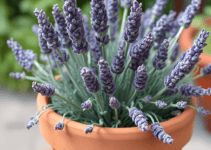Creating a Wildlife-Friendly and Sustainable Lawn
Having a beautiful and lush lawn is a dream for many homeowners. But did you know that you can have a stunning lawn while also supporting wildlife and promoting sustainability? With a few simple changes to your lawn care routine, you can create a wildlife-friendly and sustainable environment right in your own backyard. In this article, we will explore some tips and tricks to make your lawn more wildlife-friendly and sustainable.

Please, read our post and do not forget to check our YouTube channel “Grig Stamate”:
https://www.youtube.com/@GrigStamate
You will find there thousands of designing, furnishing, and decorating ideas for your home interior and outdoors.
Allow me to mention one of them:
Beautiful Gardens and Flower Gardens | OUTDOOR DECOR & LANDSCAPING IDEAS #12 (video)
1. Embrace Native Plants
One of the easiest ways to make your lawn more wildlife-friendly and sustainable is by incorporating native plants into your landscaping. Native plants are those that naturally occur in your region and have adapted to the local climate and soil conditions. These plants provide food and shelter for local wildlife, including birds, butterflies, and bees.
When choosing native plants for your lawn, consider selecting a variety of species that bloom at different times of the year. This will ensure that there is a constant source of food for wildlife throughout the seasons. Additionally, native plants typically require less water and maintenance compared to non-native species, making them a sustainable choice for your lawn.
2. Reduce Chemical Use
Chemical pesticides and fertilizers can have a negative impact on wildlife and the environment. These chemicals can leach into the soil and waterways, harming beneficial insects, birds, and other animals. To make your lawn more wildlife-friendly and sustainable, consider reducing or eliminating the use of chemical pesticides and fertilizers.
Instead, opt for organic alternatives such as compost and natural fertilizers. Compost is a great way to improve soil health and provide nutrients to your lawn naturally. You can also use natural pest control methods, such as introducing beneficial insects like ladybugs or using companion planting techniques to deter pests.
3. Create Habitat Areas
Another way to make your lawn more wildlife-friendly is by creating habitat areas. These areas can provide shelter, food, and nesting sites for a variety of wildlife. Consider leaving a portion of your lawn unmowed to create a meadow-like habitat. This will attract pollinators like butterflies and bees, as well as provide a home for small mammals and birds.
You can also create habitat areas by adding features such as birdhouses, bat boxes, and butterfly gardens. These features not only provide shelter but also encourage wildlife to visit and stay in your yard. Additionally, consider incorporating water features like bird baths or small ponds to attract a wider range of wildlife.
4. Practice Water Conservation
Water is a precious resource, and by practicing water conservation in your lawn care routine, you can make your lawn more sustainable. One way to conserve water is by using a rain barrel to collect and store rainwater. This water can then be used to irrigate your lawn and garden, reducing the need for additional water sources.
Another water-saving tip is to adjust your sprinkler system to water your lawn during the early morning or late evening when evaporation rates are lower. This ensures that the water is absorbed by the soil and reaches the plant roots, rather than evaporating into the air.
5. Leave Some Fallen Leaves
When fall arrives, it can be tempting to rake up and remove all the fallen leaves from your lawn. However, leaving some fallen leaves can actually benefit wildlife and promote a healthier lawn. Fallen leaves provide a natural mulch that helps retain moisture in the soil and suppress weed growth.
In addition, leaves provide important habitat for insects and other small creatures. Many butterfly and moth species overwinter as caterpillars or pupae in leaf litter, and removing all the leaves can disrupt their life cycle. So, consider leaving a layer of fallen leaves in certain areas of your lawn to support wildlife and promote a more sustainable environment.
Conclusion
By embracing native plants, reducing chemical use, creating habitat areas, practicing water conservation, and leaving some fallen leaves, you can make your lawn more wildlife-friendly and sustainable. These simple changes not only benefit local wildlife but also promote a healthier and more resilient lawn. So, why not transform your lawn into a haven for wildlife and contribute to a more sustainable future?
Other related posts from our website:
https://howtobuildahouseblog.com/eco-friendly-lawn-care-tips/
https://howtobuildahouseblog.com/how-to-fix-the-startup-issues-of-a-push-lawn-mower/
Thank you so much for your attention.
Stay tuned. We will upload many other amazing posts to our website and videos onto our YouTube channel.
Thank you so much.
for your time and attention.
Best Regards
See you to another post,
Bye, Bye


